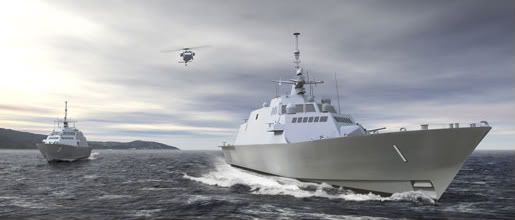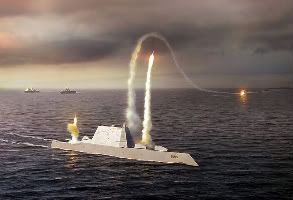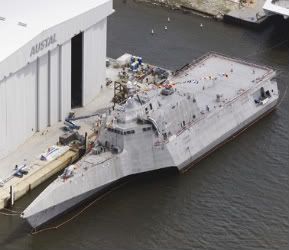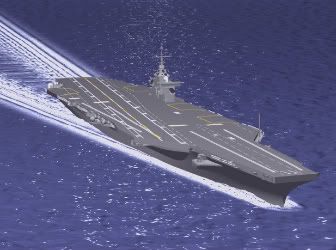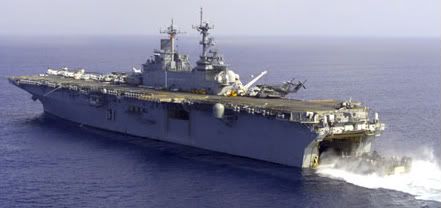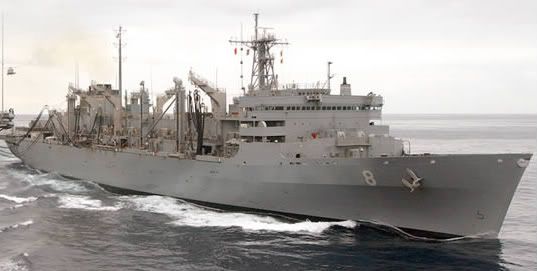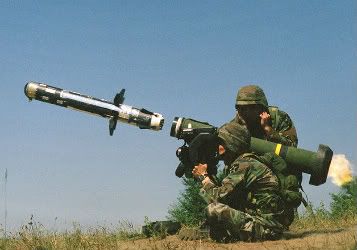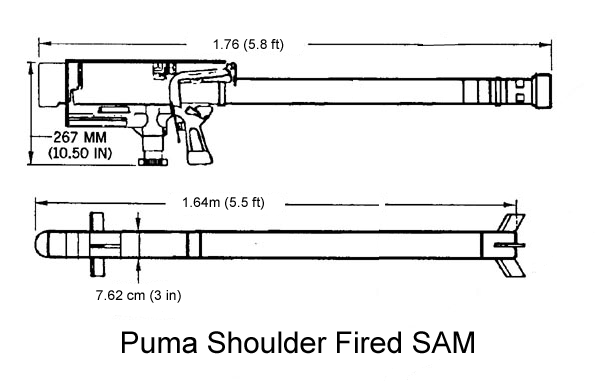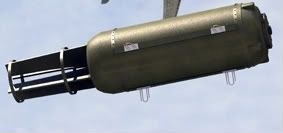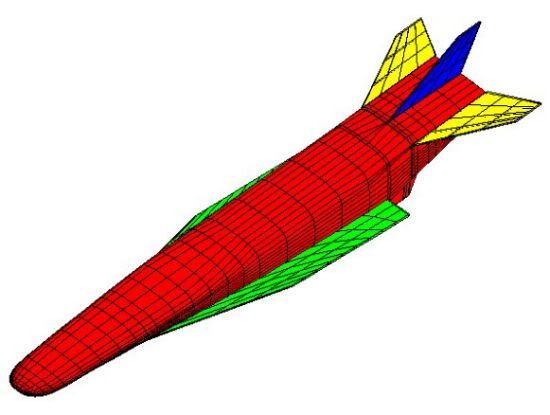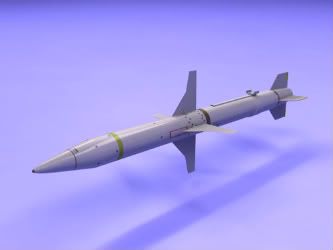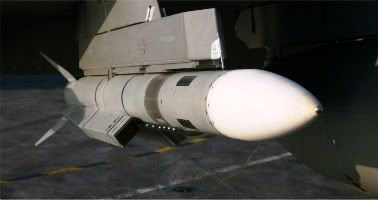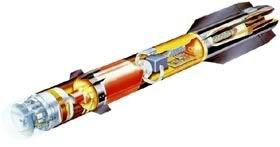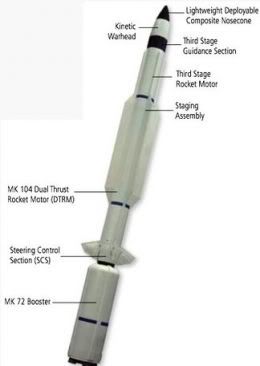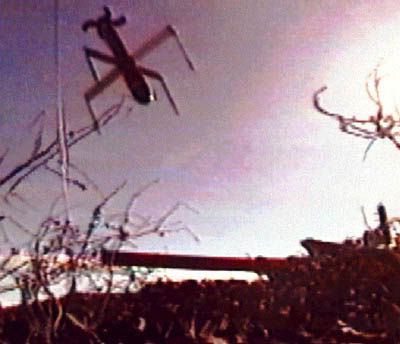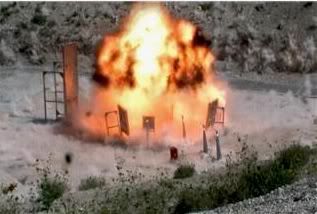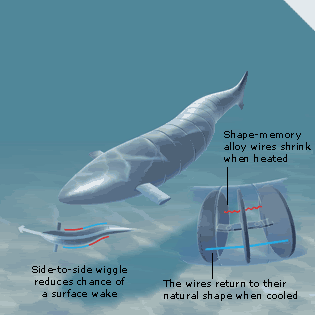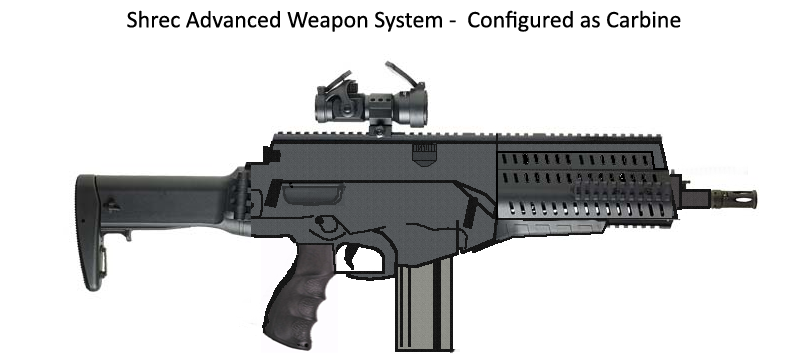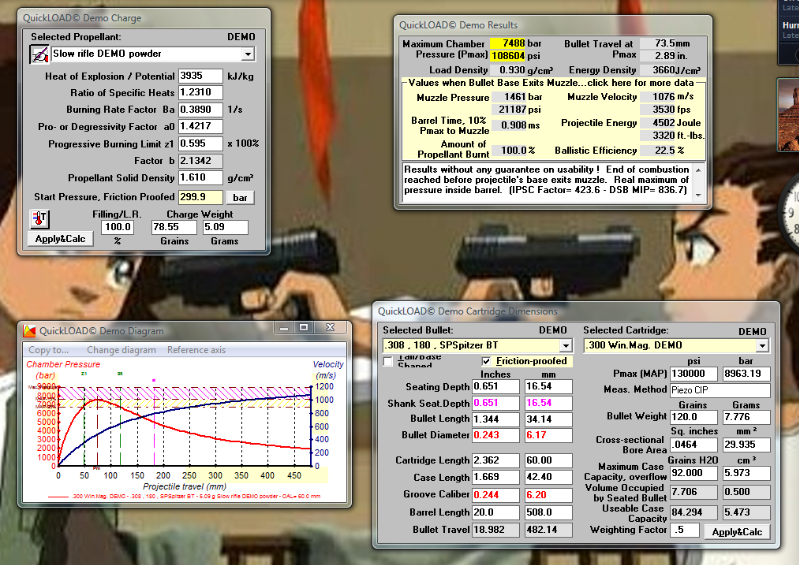Chimera ATF
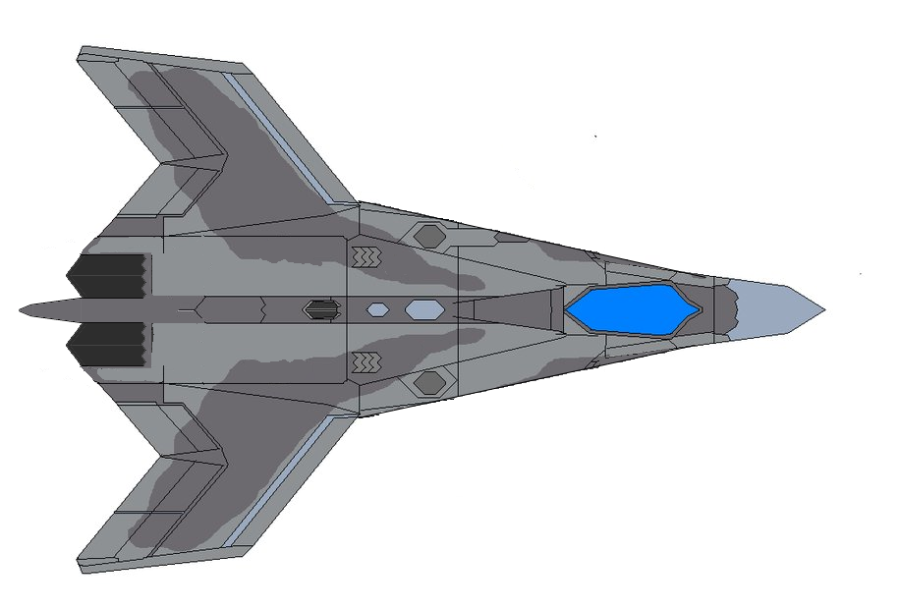
Overview:
The Chimera ATF was a child of the X-17 and X-19 concepts put forth during the fighter trials that led to the adoption of the Valkyrie IDS. In that competition the X-17 and X-19 both took the path of high stealth and capable electronic suites while the Valkyrie IDS took the path of maneuverability and low observability. The Valkyrie won that competition due to its exceptional dog fighting characteristics, its powerful electronics and its overall survivability.
The governments parameters for the Advanced Tactical Fighter were to develop an aircraft with the ability to operate from carriers and take the fight to the enemy. This meant that the aircraft would often be forced to penetrate heavily defended enemy areas. The ability to conducted lengthy combat air patrols were also an important consideration. The aircraft needed all weather operation, an effective strike ability with the use of stand off weapons preferred and the ability to penetrate heavily defended enemy air defenses.
Rushing Aircraft Company borrowed from its X-17. Rushing married a slippery high stealth airframe to the electronics package, including LPI radar and multi-spectral sensors, used in the Valkyrie thus cutting development cost. Rushing also developed a digital electronic warfare ability by attached wing pods. Though Rushing would go far beyond an updated X-17 by taking a look at a test craft called the Hummingbird.
The Hummingbird was a tailless research aircraft designed to determine the feasibility of thrust vectoring and tailless design that flew in the early 90's. The Hummingbird had proven its design in over 500 test flights and managed to achieve controlled flight at a 70° angle of attack.
The Hummingbird design had an inherently lower RCS then aircraft with tails. Therefore, Rushing decided to build their ATF from the ground up to be a tailless stealth aircraft. In initial test and comparisons the Chimera ATF showed a superior ability to penetrate enemy air defense. Stealth, super maneuverability and electronics give the Chimera respectable air to air capability.
Airframe:
There are two broad aspects of RCS minimization techniques. One falls under the effort to restructure the frame, and covers the geometric design considerations that are taken into account when aiming for a low RCS. The other principle is referred to as “radar absorbent materials” and is concerned with the materials that help to reduce the reflectivity of the airframe, as well as the structures that will support these materials and integrate them into the airframe often referred to as “Radar-absorbent structures”. These two path are of course not taken in isolation during the design; trade-offs have to be made between them in the design of the Chimera.
The most efficient way to reflect radar waves back to the transmitting radar is with orthogonal metal plates, forming a corner reflector consisting of either a dihedral or a trihedral. This configuration occurs in the tail of a conventional aircraft, where the vertical and horizontal components of the tail are set at right angles. To reduce this effect the Chimera was designed as a tailless airplane.
This tailless design results in an exceptionally maneuverable aircraft with outstanding low observability features. The fuselage and canopy have sloping sides. The canopy seam, bay doors and other surface interfaces are saw-toothed. The engine face is deeply hidden by a serpentine inlet duct and weapons are carried internally.
The tailless design utilizes a modified Lambda wing design mounted at the rear of the aircraft and supported by a slight delta shaping which moves towards the aircraft cockpit. The wing is constructed of nearly 90% composites reinforced with carbon nanotube doped carbon fiber reinforced plastic. The Chimera can maintain a constant angle of attack of over 60° and utilizes split ailerons, deflectable slats on the leading edge, thrust vectoring and a powerful fly by optics system.
The Chimera was designed with low observance throughout the entire spectrum of sensors including radar signature, visual, infrared signature, acoustic, and radio frequency as primary considerations. The low radar signature is due to a combination of factors which include special shaping techniques that include double curvature surfaces, the use of radar absorbent material, and attention to detail such as hinges and pilot helmets that could provide a radar return.
The engines use radar-absorbent material-coated S-shaped intake ducts that shield the compressor fan from reflecting radar waves. The intakes are designed through careful shaping of the airflow to prevent engine surge resulting in a compressor stall to enhance the top speed of the aircraft and performance at high angles of attack.
To disguise its infrared emissions and make it harder to detect by infrared homing surface-to-air or air-to-air missiles the Chimera uses a new ceramic-matrix RAM on its engine exhaust nozzles that is designed to reduce both the radar and IR signatures. Additionally, the aircraft uses a complicated series of paints and coatings. A new type of paint, or topcoat, first used to increase the Valkyrie's stealthiness by reducing its vulnerability to infrared threats is also applied to the Chimera. The topcoat protects the aircraft against a broad range of wavelengths and uses metal oxides for optimal radar cross section compatibility.
The Chimera is 40% titanium, 30% composite, 20% aluminum and 1% thermoplastic by weight. Titanium is used for its high strength-to-weight ratio in critical stress areas, including some of the bulkheads, and also for its heat-resistant qualities in the hot sections of the aircraft where it is combined with thermal coatings. Carbon-fiber composites have been used for the fuselage frame, the doors, the wings, and for the honeycomb sandwich construction of its skin panels.
The Chimera with its inherently unstable tailless design and 3D thrust vectoring is more maneuverable and agile than other fighters. In addition, the tailless design reduces the weight, drag and radar cross section of the aircraft. The Chimera includes a tailhook, concealed in a bay when not in use, to effect carrier landings.
The Chimera is tough and resistant to engine surge even during extreme maneuvers like classic, inverted and flat spins. This results in an aircraft capable of greater reliability and maneuverability. The Chimera is capable of performing a 180 degree turn. With such a high angle of attack the plane retains control and can perform such maneuvers as the Herbst maneuver, Pugachev's Cobra, and the Kulbit. The Chimera thrust vectoring nozzles, fly by optic system and tailless design allow the aircraft to turn tightly, and perform extremely high alpha (angle of attack) maneuvers.
Engine:
Thrust is provided by two ALTECH 30 low bypass turbofans with afterburning. The ALTECH 30 features 3D thrust vectoring technology. These engines allow the Chimera to fly in a different direction to where the nose is pointing. The nozzles can be pointed 32 degrees in either direction on the y axis, and 15 degrees in either direction on the x axis. The engine generates a larger thrust and has a complex automation system, to facilitate flight modes such as maneuverability. Each engine can independently vector its thrust upwards, downward or side to side. Vectoring one engine up with the other one down can produce a twisting force. Each ALTECH 30 produces 30,550 lbf (135.89 kN) of dry thrust and 42,000lbs lbf (186.82 kN) of thrust with afterburner.
The fuel is cooled to reduced temperatures which are substantially less than ambient temperature so that the volume of the fuel is reduced. The fuel is then stored in the fuel tanks while the fuel is at the reduced temperatures with the reduced volume of the fuel thereby allowing more fuel to be held. A further benefit of this method of fueling is that the energy value of the fuel per unit volume is increased. The onboard fuel cooling system uses liquid nitrogen as a fuel coolant. The refrigerated fuel system provides for more power and increased range through enhanced efficiency and greater fuel volume.
The refrigerated fuel is used to actively cool the aircraft leading edges and its engines tail pipes. This active cooling increases the aircraft resistance to infra-red tracking substantially. Not only does the aircraft have a very low RCS but it is much harder to track by heat seeking weapons. Both factors contribute to an aircraft that can get closer to the enemy and deeper into enemy air space.
Avionics:
The Chimera ATF shares the AN/APG-7 Active Electronically Scanned Array designed by Nemesis Electronic Systems for the Valkyrie IDS. The AN/APG-7 provides positive target identification, autonomous tracking of all targets in range, coordinate generation, and precise weapons guidance from extended standoff ranges as great as 200 miles (321 km). The radar features 15 kw of peak power and 120° Azimuth and elevation.
Designed for air superiority and strike operations, the AN/APG-7 features a low-observable, active-aperture, electronically-scanned array that can track 100 targets in any weather. The AN/APG-7 changes frequencies more than 2,000 times per second to reduce the chance of being intercepted. The radar can also use complicated search patterns that reduce the chance of detection.
The AN/APG-77 has a dedicated high resolution Synthetic-aperture radar mode. The radar can also focus its emissions to overload enemy sensors, giving the Chimera an electronic-attack capability. The AN/APG-7 transmits data at the rate of 600 Megabit per second while receiving data at 1 gigabit per second. This is the Chimera's primary connection to the combat network system. The aircraft also contains a dedicated SATCOM module to provide for combat network connectivity even on deep strike missions.
Three Nemesis Electronic Systems Common Integrated Processing Units (CIPU) are the “brains” of the Chimera avionics. Each CIPU is composed of twin quad core processors, each with four cores on one die and an integrated memory controller, front side bus and 4 megabyte cache. Each core can process 13.1 billion instructions per second. Each CIPU has 8 gigabyte of memory. Each CIPU, which is the size of an oversized bread box, supports all signal and data processing for all sensors and mission avionics. Additionally, information can be gathered from the radar and other onboard and offboard systems, filtered by the CIPU, and offered in easy-to-digest ways on several cockpit displays, enabling the pilot to remain on top of complicated situations.
Each CIPU is a sealed unit that is actively cooled by the aircraft's refrigerated fuel system. Like any liquid cooled computer case the CIPU runs cooler and as designed provides for greater resistance to the elements.
The AN/ALR-9 radar warning receiver has been demonstrated detecting radars at ranges as long as 400 nmi (740 km). This radar warning receiver allows the Chimera ATF to limit its own radar emission to preserve its stealth. The AN/ALR-9 is composed of over 30 antennas smoothly blended into the wings and fuselage that provide all around coverage plus azimuth and elevation information. As a target approaches, the receiver can cue the AN/APG-7 radar to track the target with a narrow beam, which can be as focused down to 1° by 1° in azimuth and elevation.
The Electronic Optical Targeting System (EOTS) augments the AN/APG-7 and includes a laser designator and tracker (60,000' attitude) for guiding laser-guided bombs, cryogenically cooled FLIR receiver and CCD television cameras mounted under the nose of the aircraft.
Eight additional passive infrared/Ultra violet sensors are distributed over the aircraft as part of Nemesis Electronic Systems' AN/AAQ-7 distributed aperture system (DAS), which performs several important functions. The DAS acts as a missile warning system, reports missile launch locations, detects and tracks approaching aircraft spherically around the Chimera, and replaces traditional night vision goggles for night operations and navigation. DAS functions are performed simultaneously, in every direction, at all times.
Sensor fusion combines data from all onboard and offboard sensors into a common view to prevent the pilot from being overwhelmed. The Chimera cockpit is all glass without any conventional instrumentation. The centerpiece are four multi-function heads down displays which are manipulated by means of softkeys, touch screen, XY cursor and voice command. The Symmetriad AHG-1 helmet features the latest avionics systems, including a full projected helmet-mounted display, active noise cancellation, and a filtered microphone to improve the work of voice control systems and replaces the traditional heads up display.
The DVI system used by Nemesis Electronics is a speaker-dependent system that provides the pilot command and control of all non-critical cockpit functions. Confirmation of voice commands is either visual or aural. This system is capable of sending text based orders to other aircraft or facilities through the aircrafts AESA based datalink.
Emergency escape is provided by a Symmetriad Laertes IV Advanced Ejection Seat. Furthermore, the pilot wears a Symmetriad AMS-4 g-suits with built-in air management and health monitoring systems.
The Chimera uses combined radio frequency and infrared (SAIRST) situational awareness to track all nearby aircraft continually with the pilot's helmet-mounted display system (HMDS). The Chimera uses fibre optic cabling and circuitry is composed of Gallium Arsenide (GaAs) for protection against electromagnetic interference or EMP attack where possible. Additional protections are provided by utilization of antennas and power connections with surge protectors designed specifically to defend against EMP attack, the cockpit is coated with a conductive coating, and all doors and wiring/tubing pathways through protective shielding is sealed with conductive gaskets.
Armaments:
Armaments include an internal 20 mm (0.787 in) M31A2 six-barreled, air-cooled, electrically fired Gatling-style cannon, which fires 20 mm rounds at 6600 rpm in starboard wing root with 480 rounds with a remotely operated door that shields the gun from radar when not in use. A bomb bay carries the Chimera's standard ordinance internally. Many more missiles, bombs and fuel tanks can be attached on wing pylons near wingtip positions at the expense of stealth.
Countermeasures:
Countermeasures include the Active Electronically Scanned Array (AESA) radars which can act as an ECM device to track, locate and eventually jam enemy radar. The electronic attack capability is developed enough that a Chimera can burn out unshielded electronics. 60 flares and 60 chaff are carried in two side mounted dispensers.
General characteristics:
Crew: 1
Length: 67.9 ft (20.69 m)
Wingspan: 45.2 ft (13.77 m )
Height: 18.44 ft (5.5m)
Wing area: 667 ft² (62.0 m²)
Empty weight: 48,500 lb (18,400 kg)
Loaded weight: 70,050 lb (31,774.15 kg)
Max takeoff weight: 87,000 lb (39,462.53 kg)
Powerplant: 2 x ALTECH 30
Dry thrust: 30,550 lbf (135.89 kN)
Thrust with afterburner: 42,000lbs lbf (186.82 kN)
Fuel capacity: 24,310 lb (11,026 kg) internally or 32,700 lb (14,832.14 kg) with two external fuel tanks.
Performance:
Maximum speed:
At altitude: Mach 2.25
Supercruise: Mach 1.6
Range: 2,000 nmi (2,440 mi, 3,926 km with 2 external fuel tanks)
Combat radius: 600 nmi (690 mi, 1,110 km)
Ferry range: 3,417 miles (5,500 km)
Service ceiling: 70,000 ft (21,336 m)
Wing loading: 79.4 lb/ft² (360 kg/m²)
Thrust/weight:
Maximum g-load: -4.0/+10.0 g
Armament:
Guns: 1× 20 mm (0.787 in) M31A2 Gatling gun in starboard wing root, 500 rounds
Air to air loadout:
8× Spike AMRAAM
4× Spectre BVRAAM
Air to ground loadout:
4× Spike AMRAAM and
2× Spectre BVRAAM for self-protection, and one of the following:
4× 1,000 lb (450 kg) JDAM or
4× Wind Corrected Munitions Dispensers (WCMDs) or
16× 250 lb (110 kg) GBU-39 Small Diameter Bombs
Hardpoints: 4 × under-wing pylon stations can be fitted to carry 600 gallon drop tanks or weapons, each with a capacity of 5000 lb
Price: 285,500,000
DPR Price: 285,500,000,000
Valkyrie IDS
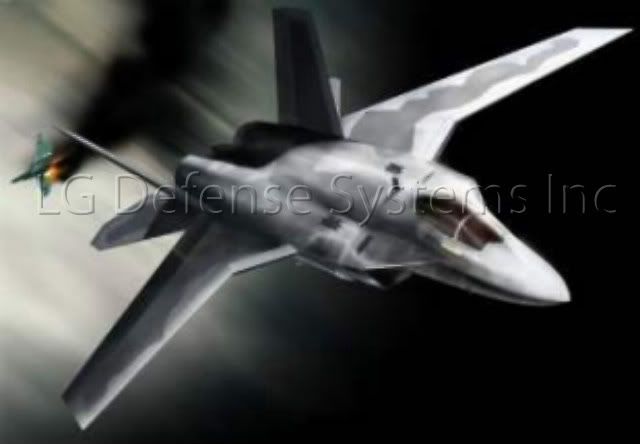
The Kirov Design Valkyrie IDS is a single-seat, twin-engine, low observability multirole fighter, that can perform close air support, tactical bombing, and air defense missions. The Valkyrie IDS is intended to be among the best dog fighters in the world with close and long-range air-to-air capability. The aircraft blends supercruise speed, super-agility, low observability and sensor fusion into a single air dominance platform. The Valkyrie IDS is capable of Mach 1.88 with a maximum service ceiling of 70,000'.
The Valkyrie is highly maneuverable, at both supersonic and subsonic speeds. It is extremely departure-resistant, enabling it to remain controllable at extreme pilot inputs. The Valkyrie's thrust vectoring nozzles allow the aircraft to turn tightly, and perform extremely high alpha (angle of attack) maneuvers such as the Herbst maneuver (or J-turn), Pugachev's Cobra, and the Kulbit, though the J-Turn is more useful in combat. The Valkyrie is also capable of maintaining a constant angle of attack of over 60°, yet still having some control of roll.
Airframe:
The Valkyrie has earned the nickname Devils Cross due to its wing design. A substantial part of the lift generated by the forward-swept wing occurs at the inner portion of the wingspan. The lift is not restricted by wingtip stall. The ailerons - the wing's control surfaces - remain effective at the highest angles of attack, and controllability of the aircraft is retained even in the event of airflow separating from the remainder of the wings' surface.
The wing panels are constructed of nearly 90% composites reinforced with carbon nanotube doped carbon fiber reinforced plastic. The forward-swept midwing has a low aspect ratio, which contributes to speed and maneuverability. The leading-edge root extensions blend smoothly to the wing panels, which are fitted with deflectable slats on the leading edge; flaps and ailerons on the trailing edge.
The downside of such a wing design is that it produces strong rotational forces that try to twist the wings off, especially at high speeds. This twisting necessitates the use of a large amount of composites in order to increase the strength and durability of the wing. The thrust vectoring of ±20° at in pitch and 5° yaw will greatly support the agility gained by the forward-swept-wings.
The Valkyrie has extremely high agility at subsonic speeds, enabling the aircraft to alter its angle of attack and its flight path very quickly while retaining maneuverability in supersonic flight. Maximum turn rates, and the upper and lower limits on airspeed for weapon launch, are important criteria in terms of combat superiority. The Valkyrie has very high levels of maneuverability with maintained stability and controllability at extreme angles of attack. Maximum turn rates are important in close combat and also at medium and long range, when the mission may involve engaging consecutive targets in different sectors of the airspace.
The swept-forward wing provides a number of advantages:
- Higher lift-to-drag ratio
Higher capacity in dogfight maneuvers
Higher range at subsonic speed
Improved stall resistance and anti-spin characteristics
Improved stability at high angles of attack
A lower minimum flight speed
A shorter take-off and landing distance
The Valkyrie has been designed to disguise its infrared emissions to make it harder to detect by infrared homing ("heat seeking") surface-to-air or air-to-air missiles. For example, new ceramic-matrix RAM is utilized on the engine exhaust nozzles to reduce radar and IR signatures. Additionally, a complicated series of paints and coatings are used to meet both RCS and infra-red suppression requirements. A new type of paint, or topcoat, increases the Valkyrie’s stealthiness by reducing its vulnerability to infrared threats. The topcoat protects the aircraft against a broad range of wavelengths and uses metal oxides for optimal radar cross section compatibility.
Engine:
The Valkyrie IDS is powered by two ALTECH 25 thrust vectoring afterburning engines. Each ALTECH 25 produces 23,780 lbf (105.78 kN) of dry thrust and 35,000lbs lbf (155 kN) of thrust with afterburner. The 3D thrust vectoring gives the Valkyrie higher maneuverability with each nozzle capable of ±20° in the pitch and 5° yaw axis.
Avionics:
The Valkyrie shares the Chimera ATF sensor suite. It’s AN/APG-7 AESA look down shoot down radar, designed by Nemesis Electronic Systems is augmented by the Electro-Optical Targeting System (EOTS) mounted under the nose of the aircraft. The AN/APG-7 provides positive target identification, autonomous tracking of all targets in range, coordinate generation, and precise weapons guidance from extended standoff ranges as great as 200 miles.
The AN/APG-7 is designed for air superiority and strike operations and features a low-observable, active-aperture, electronically-scanned array that can track multiple targets in any weather. The AN/APG-7 changes frequencies more than 2,000 times per second to reduce the chance of being intercepted. The radar can also use complicated search patterns that reduce the chance of detection.
The radar can also focus its emissions to overload enemy sensors, giving the aircraft an electronic-attack capability. The AN/APG-7 transmits data at the rate of 600 Megabit per second while receiving data at 1 gigabit per second. This is the Valkyrie's primary connection to the combat network system.
Three Nemesis Electronic Systems Common Integrated Processing Units (CIPU)s are the “brains” of the Valkyrie avionics. Each CIPU can process 13.1 billion instructions per second and has 1 gigabyte of memory. Each CIPU, which is the size of an oversized bread box, supports all signal and data processing for all sensors and mission avionics. Additionally, information can be gathered from the radar and other onboard and offboard systems, filtered by the CIPU, and offered in easy-to-digest ways on several cockpit displays, enabling the pilot to remain on top of complicated situations.
The avionics include the AN/ALR-9 radar warning receiver which is a passive receiver system capable of detecting the radar signals in the environment. The AN/ALR-9 is composed of more than 30 antennas smoothly blended into the wings and fuselage that provide all around coverage plus azimuth and elevation information. The AN/ALR-9 has been demonstrated detecting radars at ranges as long as 400 nmi and enables the Valkyrie to limit its own radar emission to preserve its stealth. As a target approaches, the receiver can cue the AN/APG-7 radar to track the target with a narrow beam, which can be as focused down to 1° by 1° in azimuth and elevation.
The Electronic Optical Targeting System (EOTS) include a laser designator and tracker (60,000' attitude) for guiding laser-guided bombs, cryogenically cooled FLIR receiver and CCD television cameras mounted under the nose of the aircraft. Eight additional passive infrared sensors are distributed over the aircraft as part of Nemesis Electronic Systems' AN/AAQ-7 distributed aperture system (DAS), which acts as a missile warning system, reports missile launch locations, detects and tracks approaching aircraft spherically around the Valkyrie, and replaces traditional night vision goggles for night operations and navigation. All DAS functions are performed simultaneously, in every direction, at all times.
Sensor fusion combines data from all onboard and offboard sensors into a common view to prevent the pilot from being overwhelmed. The cockpit is all glass without any conventional instruments. Three multi-function heads down displays are the center pieces of the glass cockpit. The Symmetriad AHG-1 helmet features the latest avionics systems, including a full projected helmet-mounted display, active noise cancellation, and a filtered microphone to improve the work of voice control systems mounted display system replaces the conventional heads up display.
The DVI system by Nemesis Incorporated is a speaker-dependent system that provides the pilot command and control of non-critical cockpit functions, to reduce pilot workload, improve aircraft safety, and expand mission capabilities. Confirmation of voice commands is either visual or aural. Emergency escape is by a Symmetriad Laertes IV Advanced Ejection Seat. Pilots wear Symmetriad AMS-4 g-suits with built-in air management and health monitoring systems.
The Valkyrie IDS uses combined radio frequency and infrared (SAIRST) situational awareness to track all nearby aircraft continually with the pilot's helmet-mounted display system (HMDS) to display and select targets. This gives the Valkyrie the ability to use High Off-Boresight (HOBS) weapons to eliminate threats.
The Valkyrie uses fibre optic cabling and circuitry is composed of Gallium Arsenide (GaAs) for protection against electromagnetic interference or EMP attack where possible. Additional protections are provided by utilization of antennas and power connections with surge protectors designed specifically to defend against EMP attack, the cockpit is coated with a conductive coating, and all doors and wiring/tubing pathways through protective shielding is sealed with conductive gaskets.
Armaments:
Armaments include an internal 20 mm (0.787 in) M31A2 six-barreled, air-cooled, electrically fired Gatling-style cannon, which fires 20 mm rounds at 6600 rpm in starboard wing root with 500 rounds, and an internal bomb bay for up to 6× Spike AMRAAM and 2× Spectre BVRAAM or other weaponry. At the expense of being more detectable by radar, many more missiles, bombs and fuel tanks can be attached on four wing pylons and two near wingtip positions (10,000lbs per wing).
Countermeasures:
Countermeasures include the Active Electronically Scanned Array (AESA) radars which can act as an ECM device to track, locate and eventually jam enemy radar. The electronic attack capability is developed enough that a Valkyrie IDS can burn out unshielded electronics. 60 flares and 60 chaff are carried in two side mounted dispensers.
General characteristics:
Crew: 1
Length: 65 ft 9 in (19.80 m)
Wingspan: 16.7 m (54 ft 9 in)
Height: 19 ft 8 in (6.05 m)
Wing area: Wing area: 61.87 m² (666 ft²)
Empty weight: 45,130 lb (20,470.62 kg)
Loaded weight: 66,040 lb (29,955.24 kg)
Max takeoff weight: 83,500 lb (38,000 kg)
Powerplant: 2× ALTECH 25 pitch and yaw thrust vectoring turbofans
Dry thrust: 23,780 lbf (105.78 kN) each
Thrust with afterburner: 35,000lbs lbf (155 kN) each
Fuel capacity: 22,711 lb (10,300 kg) internally or 30,700 lb (13,930.27 kg) with two external fuel tanks
Performance:
Maximum speed:
At altitude: Mach 1.88
Supercruise: Mach 1.3
Range: 2,000 nmi (2,440 mi, 3,926 km) with 2 external fuel tanks
Combat radius: 510 nmi (561 mi, 902 km)
Ferry range: 3,416 mi (2,969 nmi, 5,500 km)
Service ceiling: 70,000 ft (21,336 m)
Wing loading: 79.4 lb/ft² (360 kg/m²)
Thrust/weight: 1.21
Maximum g-load: -3.0/+9.0 g
Armament:
Guns: 1× 20 mm (0.787 in) M31A2 Gatling gun in starboard wing root, 500 rounds
Air to air loadout:
6× Spike AMRAAM
2× Spectre BVRAAM
Air to ground loadout:
2× Spike AMRAAM and
2× Spectre BVRAAM for self-protection, and one of the following:
2× 1,000 lb (450 kg) JDAM or
2× Wind Corrected Munitions Dispensers (WCMDs) or
8× 250 lb (110 kg) GBU-39 Small Diameter Bombs
Hardpoints: 4× under-wing pylon stations can be fitted to carry 600 gallon drop tanks or weapons, each with a capacity of 5,000 lb
Price: 215,000,000 NSD
DPR Price: 215,000,000,000 NSD
Jinn II UCAV
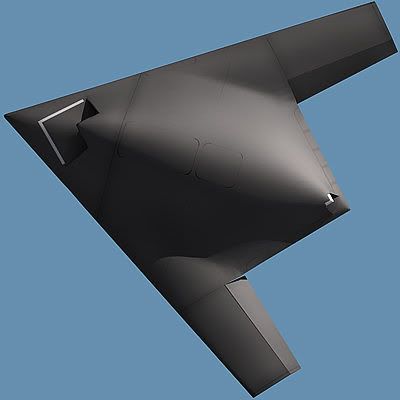
The Kirov Design Jinn UCAV is a pilotless, single-engine, stealth-capable unmanned vehicle, that can autonomously penetrate deeply into enemy territory to attack enemy targets perform surveillance, and suppress enemy air defenses. The Jinn can also autonomously control a section of airspace against airborne threats. The systems AI system can communicate, allocate resources and conduct combat with a team of up to 100 Jinn operating together. Maximum speed is mach 1.3.
The Jinn UCAV is equipped with the AN/APG-5L AESA look down shoot down radar augmented by the Sharpshooter Targeting System mounted under the nose of the aircraft to provide positive target identification, autonomous tracking of 16 targets in range, coordinate generation, and precise weapons guidance. Sharpshooter includes a laser designator and tracker (50,000' attitude) for guiding laser-guided bombs and cryogenically cooled FLIR receiver. The Jinn can be controlled when needed by an operator using the Matroiska Neural Net.
Designed with two weapons bays, one on each side of the engine, that may be each loaded with a single 2000 pound bomb or two air-to-air missiles and two air-to-air or air-to-ground weapons the Jinn can autonomously deliver ordinance with pinpoint accuracy.
Countermeasures include the Active Electronically Scanned Array (AESA) radars which can act as an ECM device to track, locate and eventually jam enemy radar. Flares and chaff are also carried.
Range: 2,600 nautical miles
Service ceiling: 65,000 ft
Dimensions
Wingspan: 14.93m
Overall Length: 11.89m
Overall Height: 2.03m
Fuselage Length: 8.03m
Price: 10,000,000 NSD
DPR Price: 50,000,000,000 NSD
Storm Shadow B-1

The Storm Shadow has a range of 8000 nautical miles without refueling. Jointly developed by Rushing Aircraft and Kirov Design this Jet features an advanced engine design that increases efficiency and power over previous designs while lowering fuel cost significantly. It combines GPS Aided Targeting System (GATS) with GPS-aided bombs such as Joint Direct Attack Munition (JDAM). This uses its passive mode on its AESA electronically scanned array APQ-200 radar to correct GPS errors of targets and gain much better than laser-guided weapon accuracy when "dumb" gravity bombs are equipped with a GPS-aided "smart" guidance tail kit. Electro-Optical Targeting System (EOTS) mounted under the nose of the aircraft provides positive target identification, autonomous tracking of all targets in range, coordinate generation, and precise weapons guidance from extended standoff ranges as great as 200 miles without compromising the aircraft's stealth. EOTS include a laser designator and tracker (50,000' attitude) for guiding laser-guided bombs, cryogenically cooled FLIR receiver and CCD television cameras.
Countermeasures include the Active Electronically Scanned Array (AESA) radars which can act as an ECM device to track, locate and eventually jam enemy radar. Flares and chaff are also present carried.
Crew: 2 (aircraft commander, copilot/weapons officer)
Length: 44.5 m
Wingspan: Extended: 41.8 m
Height: 5.4 m
Wing area: 181.2 m²
Empty weight: 70,100 kg
Loaded weight: 140,000 kg
Maximum speed: Mach 4.03
Cruise speed: Mach 3.2
Price: 1,235,000,000 NSD
DPR Price: 1,235,000,000,000 NSD
AH-3 Archangel

The AH-3 Archangel is a five-blade, twin-engine attack helicopter with reverse-tricycle landing gear, and tandem cockpit for a crew of two. Its incorporated stealth features to avoid detection, such as retractable weapon stations and main gun, and stealth faceting and radar absorbent materials. The AH-3 Archangel's noise signature is noticeably smaller than others in its class being 10 times quieter than an AH-64 Apache.
The helicopter is armed with a case-less 30 mm automatic M230 Electric Cannon firing depleted uranium armor piercing rounds at the rate of 10,800 rounds per minute that can be slaved to the gunner's Helmet mounted display, fixed to a locked forward firing position, or controlled via the Target Acquisition and Designation System (TADS). The Archangel carries a range of external stores on its retractable weapon stations, typically a mixture of Aries ATGM, Cobra 7 general-purpose unguided 70 mm rockets, and Puma laser guided SAMs, Puma 2 fire and forget , IR homing SAMs for countermeasures defense.
TADS contains stabilized electro-optical sensors, a laser rangefinder and laser target designator. The TADS assembly can rotate +/- 120 degrees in azimuth, +30/-60 degrees in elevation and can move independently of the Pilot Night Vision System (PNVS). The movements of TADS can be 'slaved' to the head movements of the helicopter crew to point where they are looking. This allows images from TADS to be projected onto the crew helmet-mounted optical sights, overlaid upon their view of the cockpit and battle space.
TADS contains a thermal imaging infrared camera, a full color television camera and a directional laser microphone. The AN/APG-18 millimeter-wave Fire Control Radar (FCR) target acquisition system as well as the Radar Frequency Interferometer (RFI) is housed above the rotor. The elevated position of the radome allows detection and (arcing) missile engagement of targets even when the helicopter itself is concealed by an obstacle. The RFI has a highly sensitive 360 degree field of view and integration with the aircraft survivability equipment.
Mounted above the TADS, the PNVS contains an infrared camera slaved to the head movements of the pilot. PNVS can rotate +/- 90 degrees in azimuth and +20/-45 degrees in elevation. Pilot Night Vision System (PNVS) has a high rate of movement (120° per second) so as to accurately match the head movements of the pilot.
All Archangel feature a digital communication suite capable of utilizing and sharing data across the interconnected combat network. This allows the use of sensor data from air, ground, ships and satellites to target enemy forces.
The helicopter utilizes Black Hole OrcanaTM technology to move the engines heat signature to a point above and behind the helicopter. Utilizing aerodynamic shaping the aircraft concentrates engine heat signature up and behind the helicopter. The aircraft also carries flare and chaff dispensers.
Crew: 2 (Pilot, copilot/weapons officer)
Length: 15.73 m
Rotor diameter: 12.90 m
Height: 3.37 m
Empty weight: 3,942 kg
Loaded weight: 4,806 kg
Maximum speed: 500 km/h
Cruise speed: 500 km/h
Range: 500 km (internal fuel)
Ferry range: 2,430 km
Service ceiling: 7,200 m
Price: 25,000,000 NSD
DPR Price: 250,000,000,000 NSD
UH-5 Wwvyn
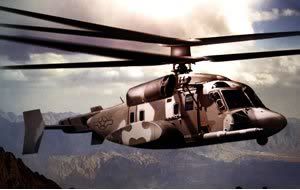
The UH-5 Wwvyn is a Advancing Blade system consisting of two rigid, contra-rotating rotors which make use of the aerodynamic lift of the advancing blades. At high speeds, the retreating blades are offloaded, as most of the load is supported by the advancing blades of both rotors and the penalty due to stall of the retreating blade is thus eliminated. This system does not even require a wing to be fitted for high speeds or to improve maneuverability, and also eliminates the need for an anti-torque rotor at the tail.
The UH-5 Wwvyn is optimized for low signatures (acoustic, radar, infrared). It is equipped with a night vision system (Forward Looking Infra-Red, Night Vision Goggles, Helmet Mounted Sight & Display). Other features include weather radar, digital mapping, Obstacle Warning System, cable cutters, armored to protect against 12.7mm armor piercing rounds, defensive weapons suite including two LMG-9 machine guns, passive and active counter measures and the addition of 76mm rocket pods, 30mm gun pods or Quad Aries ATGMs on each of two detachable stub wings. The UH-5 Wwvyn is equipped with the rear-loading ramp to facilitate fast loading.
The helicopter utilizes Black Hole OrcanaTM technology to move the engines heat signature to a point above and behind the helicopter. Utilizing aerodynamic shaping the aircraft concentrates engine heat signature up and behind the helicopter. The aircraft also carries flare and chaff dispensers.
Crew: 2 (Pilot, copilot/weapons officer)
Capacity: 2,640 lb of cargo internally, including 14 troops or 6 stretchers, or 10,000 lb of cargo externally
Length: 12.42 m
Rotor diameter: 10.97 m
Height: 4.01 m
Empty weight: 3,942 kg
Loaded weight: 4,989.51 kg
Maximum speed: 550 km/h
Cruise speed: 400 km/h
Range: 600 km (internal fuel)
Ferry range: 2,430 km
Service ceiling: 7,000 m
Price: 6,900,000 NSD
DPR Price: 34,500,000,000
Transport and AWACS
C-7 Titan
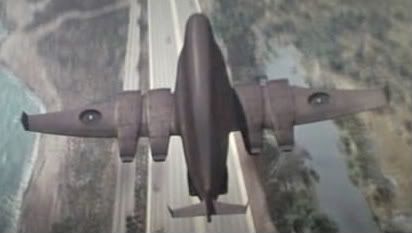
The C-7 Titan is an advanced VSTOL large military transport aircraft that is capable of being configured as an aerial refueling platform. A version of the aircraft designated E-7 Cats Eye serves as the AWACs platform for the Libertarian Governance Defense Force (LGDF). The aircraft features the extensive usage of carbon fibre and is equipped with 4 Rushing Aircraft J100 engines and two Ventner Ducted fan engines. The Rushing engines can direct their trust downward and with the two ducted fans can lift the aircraft vertically.
The nose and aft doors open the full width and height of the cargo compartment to permit faster and easier loading. Ramps are full width at each end for loading double rows of vehicles. The cargo floor has rollers (used for palletized cargo) that can be flipped to provide a flat floor suitable for rolling stock.The cockpit features a fly-by-wire flight control system with sidestick controllers and flight envelope protection. C-7 has a full glass cockpit with digital screens.
The aircraft is equipped with flare and chaff dispensers.
E-7 Cats Eye Awacs is a modified C-7 that has a MESA" Electronically Scanned Array radar mounted in a dorsal arrangement atop the C-7 rear fuselage. and designed to provide all-weather surveillance, command, control and communications. It has an increased range of 8000 km due to internal fuel cells placed in the cargo hold and it carries a crew of 28. The AN/APY-9 "MESA" Electronically Scanned Array radar system provides surveillance from the Earth's surface up into the stratosphere, over land or water.
The MESA radar has a range of more than 250 miles (400 km) for low-flying targets at its operating altitude (essentially to the radar horizon), and a range of approximately 400 miles (650 km) for aerospace vehicles flying at medium to high altitudes (essentially above the radar horizon). The electronically scanned array features three apertures sharing "L" band frequency transmit and receive modules to attain 360 degrees of coverage. The "L" band frequency is an optimum blend of range, detection capability, size and weight. The steerable beam, L-band electronically scanned array is designed to provide optimal performance in range, tracking, accuracy and growth. The radar is able to track air and sea targets simultaneously and can help the operator maintain control of high-performance aircraft while continuously scanning the operational area.
The AN/APY-9 radar can simultaneously track 6000 air, sea and ground targets. The system's variable track update rates and dedicated tracking modes allow the operator to track allied and hostile high performance aircraft while continuously scanning the area of operations.
The Cats Eye has ESM for passive detection of targets and an electronic surveillance capability to detect and identify air and surface-based radar, laser and infra red emitters. The Cats Eye can relay and receive data to/from aircraft, ships, ground personnel and vehicles and control UCAV vehicles.
The system SAR modes can produce images of stationary objects. Objects with many angles (for example, the interior of a pick-up bed) will give a much better radar signature (called specular returns). In addition to being able to detect, locate and track large numbers of ground vehicles, the radar has the capability to detect helicopters, rotating antennas and low, slow moving fixed wing aircraft.
Crew:3 (Pilot, copilot and loadmaster)
Capacity: 102 troops with standard centerline seats or 134 troops with palletized seats or, 36 litter and 54 ambulatory patients or Cargo, such as Katana Tanks
Payload: 200,000 lb (90,718 kg) of cargo distributed at max over 20 553L master pallets or a mix of palletized cargo and vehicles
Length: 53 m
Wing span: 51.75 m
Height: 16.8 m
Empty weight: 125,100 kg
Max take off weight: 275,350 kg
Cruise speed: 900 km/h
Range: 6000 km (internal fuel)
Service ceiling: 14,000 m
Price: 100,000,000 NSD
DPR Price: 100,000,000,000 NSD
Price: 425,000,000 NSD for E-7 Cats Eye version
DPR Price: 425,000,000,000 NSD
C-9 Atlas
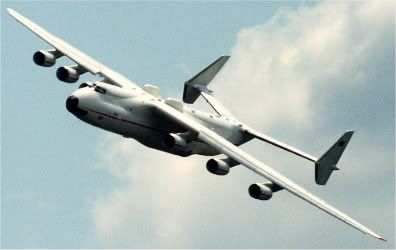
The C-9 Atlas is a strategic airlift transport aircraft which is built by Kirov Design and is among the largest fixed-wing aircraft ever built. Featuring 6 Stage 3 turbofan engines this aircraft can handle a payload of 250,000 kg (550,000 lb).
The nose door will open the full width and height of the cargo compartment to permit faster and easier loading. A full width ramp allows for loading double rows of vehicles. The cargo floor has rollers (used for palletized cargo) that can be flipped to provide a flat floor suitable for rolling stock.The cockpit features a fly-by-wire flight control system with sidestick controllers and flight envelope protection. C-9 has a full glass cockpit with digital screens.
Crew:6
Payload: 250,000 kg (550,000 lb)
Door dimensions: 440 x 640 cm (14.4 x 21 ft)
Length: 84 m (275.6 ft)
Wingspan: 88.4 m (290 ft 2 in)
Height: 18.1 m (59.3 ft)
Empty weight: 285,000 kg (628,315 lb)
Cargo Volume: 1,300 m3 (46,000 cu ft)
Max take off weight: 600,000 kg (1,323,000 lb)
Cruise speed: 850 km/h (460 knots, 530 mph)
Range: With maximum fuel: 15,400 km (9,570 mi); With maximum payload: 4,000 km (2,500 mi)
Service ceiling: 11,000 m (36,100 ft)
Price: 180,000,000 NSD
DPR Price: 180,000,000,000 NSD

The C-7 Titan is an advanced VSTOL large military transport aircraft that is capable of being configured as an aerial refueling platform. A version of the aircraft designated E-7 Cats Eye serves as the AWACs platform for the Libertarian Governance Defense Force (LGDF). The aircraft features the extensive usage of carbon fibre and is equipped with 4 Rushing Aircraft J100 engines and two Ventner Ducted fan engines. The Rushing engines can direct their trust downward and with the two ducted fans can lift the aircraft vertically.
The nose and aft doors open the full width and height of the cargo compartment to permit faster and easier loading. Ramps are full width at each end for loading double rows of vehicles. The cargo floor has rollers (used for palletized cargo) that can be flipped to provide a flat floor suitable for rolling stock.The cockpit features a fly-by-wire flight control system with sidestick controllers and flight envelope protection. C-7 has a full glass cockpit with digital screens.
The aircraft is equipped with flare and chaff dispensers.
E-7 Cats Eye Awacs is a modified C-7 that has a MESA" Electronically Scanned Array radar mounted in a dorsal arrangement atop the C-7 rear fuselage. and designed to provide all-weather surveillance, command, control and communications. It has an increased range of 8000 km due to internal fuel cells placed in the cargo hold and it carries a crew of 28. The AN/APY-9 "MESA" Electronically Scanned Array radar system provides surveillance from the Earth's surface up into the stratosphere, over land or water.
The MESA radar has a range of more than 250 miles (400 km) for low-flying targets at its operating altitude (essentially to the radar horizon), and a range of approximately 400 miles (650 km) for aerospace vehicles flying at medium to high altitudes (essentially above the radar horizon). The electronically scanned array features three apertures sharing "L" band frequency transmit and receive modules to attain 360 degrees of coverage. The "L" band frequency is an optimum blend of range, detection capability, size and weight. The steerable beam, L-band electronically scanned array is designed to provide optimal performance in range, tracking, accuracy and growth. The radar is able to track air and sea targets simultaneously and can help the operator maintain control of high-performance aircraft while continuously scanning the operational area.
The AN/APY-9 radar can simultaneously track 6000 air, sea and ground targets. The system's variable track update rates and dedicated tracking modes allow the operator to track allied and hostile high performance aircraft while continuously scanning the area of operations.
The Cats Eye has ESM for passive detection of targets and an electronic surveillance capability to detect and identify air and surface-based radar, laser and infra red emitters. The Cats Eye can relay and receive data to/from aircraft, ships, ground personnel and vehicles and control UCAV vehicles.
The system SAR modes can produce images of stationary objects. Objects with many angles (for example, the interior of a pick-up bed) will give a much better radar signature (called specular returns). In addition to being able to detect, locate and track large numbers of ground vehicles, the radar has the capability to detect helicopters, rotating antennas and low, slow moving fixed wing aircraft.
Crew:3 (Pilot, copilot and loadmaster)
Capacity: 102 troops with standard centerline seats or 134 troops with palletized seats or, 36 litter and 54 ambulatory patients or Cargo, such as Katana Tanks
Payload: 200,000 lb (90,718 kg) of cargo distributed at max over 20 553L master pallets or a mix of palletized cargo and vehicles
Length: 53 m
Wing span: 51.75 m
Height: 16.8 m
Empty weight: 125,100 kg
Max take off weight: 275,350 kg
Cruise speed: 900 km/h
Range: 6000 km (internal fuel)
Service ceiling: 14,000 m
Price: 100,000,000 NSD
DPR Price: 100,000,000,000 NSD
Price: 425,000,000 NSD for E-7 Cats Eye version
DPR Price: 425,000,000,000 NSD
C-9 Atlas

The C-9 Atlas is a strategic airlift transport aircraft which is built by Kirov Design and is among the largest fixed-wing aircraft ever built. Featuring 6 Stage 3 turbofan engines this aircraft can handle a payload of 250,000 kg (550,000 lb).
The nose door will open the full width and height of the cargo compartment to permit faster and easier loading. A full width ramp allows for loading double rows of vehicles. The cargo floor has rollers (used for palletized cargo) that can be flipped to provide a flat floor suitable for rolling stock.The cockpit features a fly-by-wire flight control system with sidestick controllers and flight envelope protection. C-9 has a full glass cockpit with digital screens.
Crew:6
Payload: 250,000 kg (550,000 lb)
Door dimensions: 440 x 640 cm (14.4 x 21 ft)
Length: 84 m (275.6 ft)
Wingspan: 88.4 m (290 ft 2 in)
Height: 18.1 m (59.3 ft)
Empty weight: 285,000 kg (628,315 lb)
Cargo Volume: 1,300 m3 (46,000 cu ft)
Max take off weight: 600,000 kg (1,323,000 lb)
Cruise speed: 850 km/h (460 knots, 530 mph)
Range: With maximum fuel: 15,400 km (9,570 mi); With maximum payload: 4,000 km (2,500 mi)
Service ceiling: 11,000 m (36,100 ft)
Price: 180,000,000 NSD
DPR Price: 180,000,000,000 NSD
Copyrights and Trademarks : LG Defense Systems Inc., is a fictitious entity in the game, Nation States. Throughout this thread you will see fictitious merchandise usually identified with a piece of art. Those pieces of art (photographs, drawings, paintings, etc.,) have from time to time, both to increase the sense of realism and to frankly to keep non creative persons from stealing modified works, been labeled. Some carry a watermark of the LG Defense Systems Logo. Let us be clear that we are in no way claiming or attempting to diminish the outstanding work that each artist has contributed to our story. We did not create nor do we claim to own any of this art in the real world. The art representing the Storm Shadow B-1 is Copyright Jaecheol Park, All Rights Reserved.




